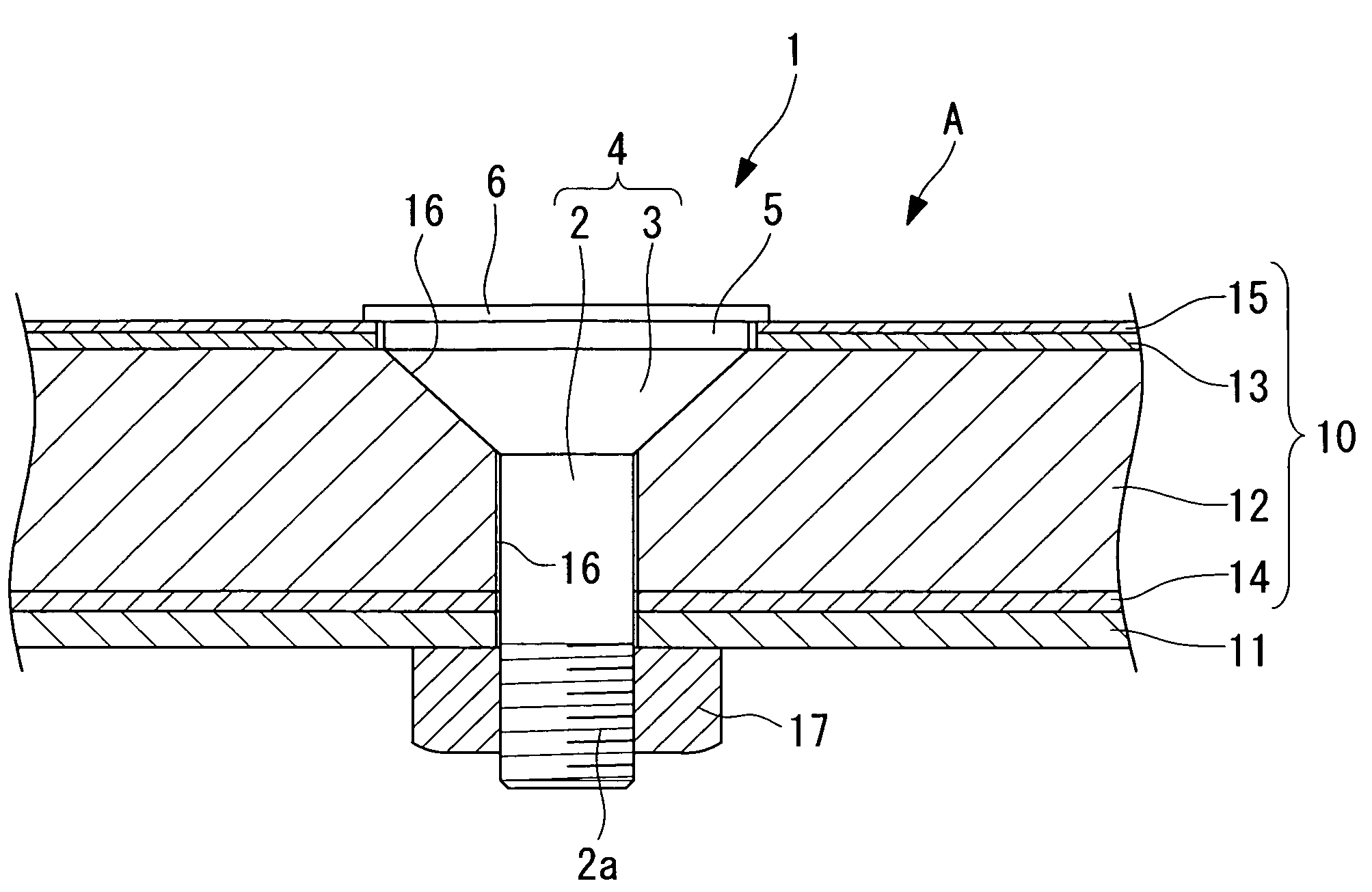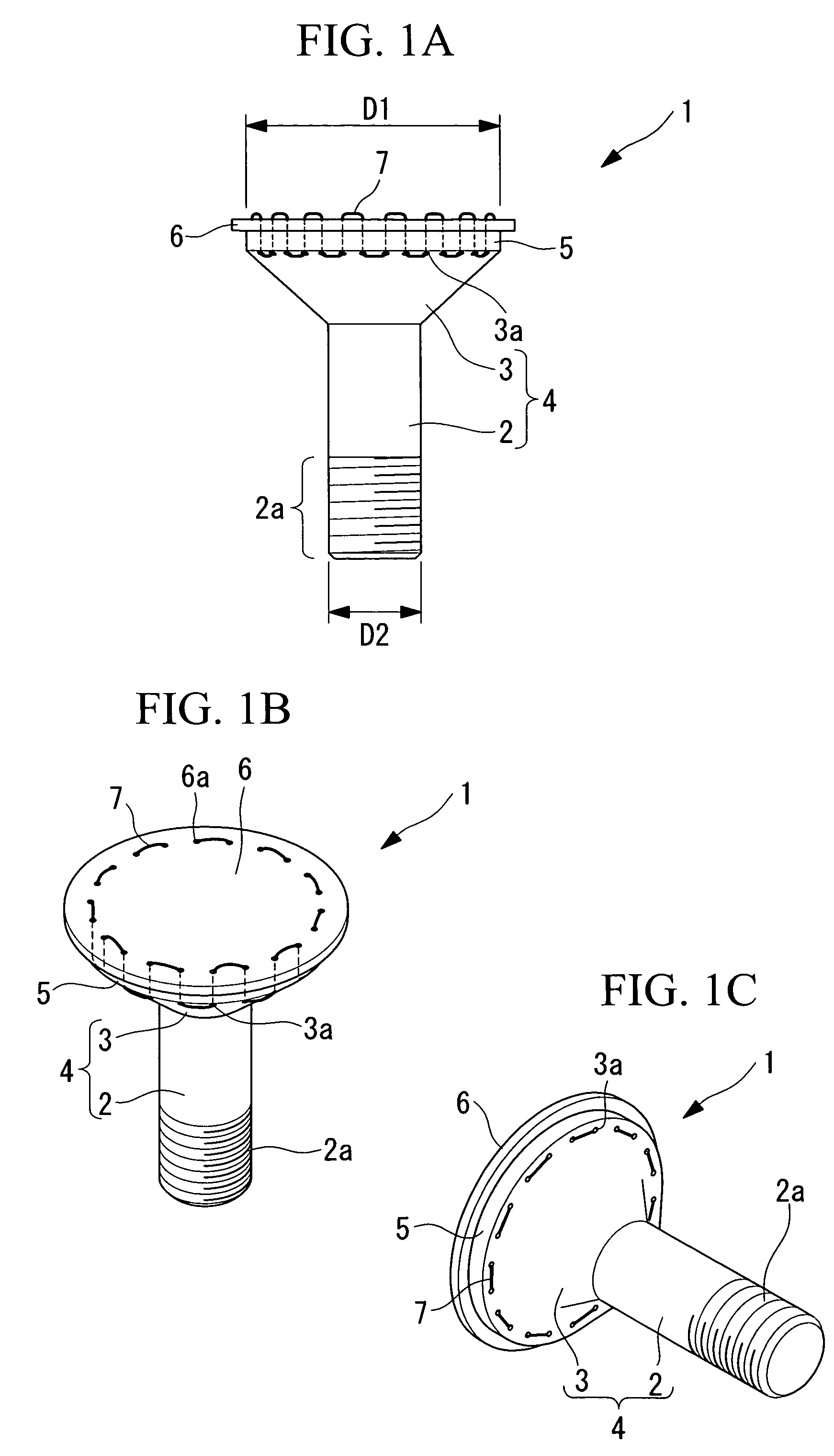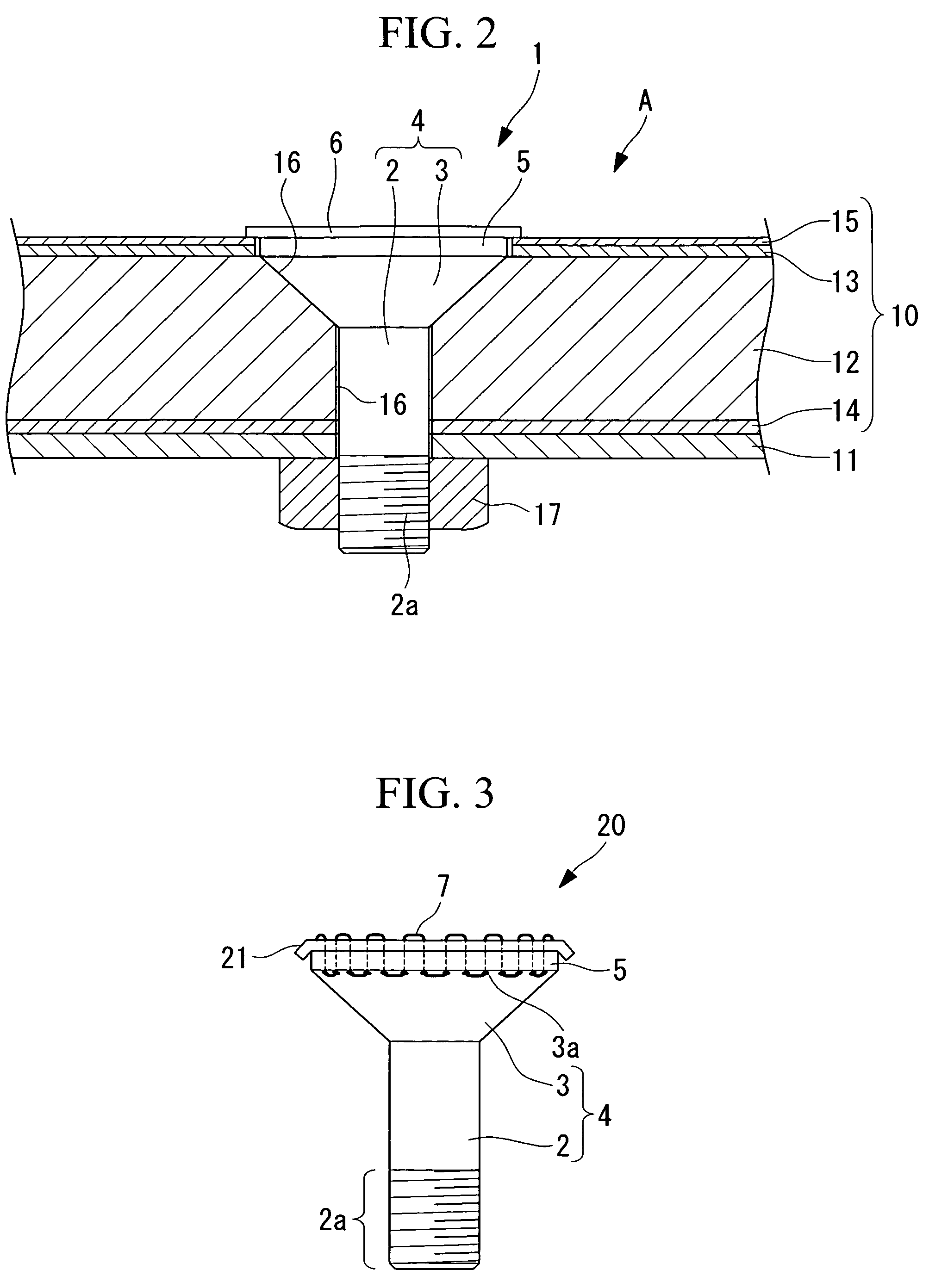Fastener
a fastener and head section technology, applied in the field of fasteners, can solve the problems of the abovementioned fastener, the risk of the dielectric cap peeling off (coming off) from the head section of the fastener, and the obstruction of the flow of electric shock current, so as to prevent damage
- Summary
- Abstract
- Description
- Claims
- Application Information
AI Technical Summary
Benefits of technology
Problems solved by technology
Method used
Image
Examples
first embodiment
[0035]Hereinafter, a lightning protection fastener according to present invention is described, with reference to the drawings.
[0036]As shown in FIG. 1, the lightning protection fastener (hereinafter, referred to as the “fastener”) 1 according to the present embodiment comprises as the main components: a fastener main body 4 having a column shaped shank section (Shank) 2 and a substantially conically shaped head section (Flush Head) 3 the diameter of which becomes greater in the direction away from the shank section 2; a dielectric layer 5 arranged to cover one end surface (upper side end surface in FIG. 1(a)) of the head section 3; a conductive layer 6 arranged to cover one end surface (upper side end surface in FIG. 1(a)) of the dielectric layer 5; and a fixing means 7.
[0037]The fastener main body 4 is formed from the integration of the shank section 2 and the head section 3, and is fabricated using alloy metals such as titanium (Ti-6Al-4V: annealed material) and inconel, for exam...
second embodiment
[0060]A second embodiment according to the present invention is described, using FIG. 3.
[0061]A fastener 20 in the present embodiment differs from the above described embodiment in that a conductive layer 21 is provided instead of the conductive layer 6 described above, in which a circumference section positioned to the outside of the through holes 6a in a radial direction is bent towards (made to face) the fastener main body 4 side (downside in FIG. 3). Other components are identical with those in the first embodiment described above, and descriptions for these identical components are omitted here.
[0062]Moreover, the same reference symbols are given to members that are identical with those in the first embodiment.
[0063]According to the fastener 20 of the present embodiment, in the case where it is used for connecting the outer skin 10 to a structural member 11 (for example, a rib or a stringer) of an aircraft as shown in FIG. 2 for example, since a back surface positioned on the c...
third embodiment
[0065]A third embodiment according to the present invention is described, using FIG. 4.
[0066]A fastener 30 in the present embodiment differs from the first embodiment in that a double layer structure 31 in which a conductive layer 6 is laminated on the top surface of a dielectric layer 5, is fixed on (attached to) the head section 3 of the fastener main body 4 via an adhesive agent (not shown in the diagram) . Other components are identical with those in the first embodiment described above, and descriptions for these identical components are omitted here.
[0067]Moreover, the same reference symbols are given to members that are identical with those in the first embodiment.
[0068]In the present embodiment, GFRP having a thickness of 1.0 mm is used as the dielectric layer 5, and copper foil having a thickness of 0.2 mm (a thickness of 30 μm may even be used) is used as the conductive layer 6.
[0069]Moreover, epoxy adhesive agent (for example, the epoxy adhesive agent EA9396 made by the c...
PUM
 Login to View More
Login to View More Abstract
Description
Claims
Application Information
 Login to View More
Login to View More - R&D
- Intellectual Property
- Life Sciences
- Materials
- Tech Scout
- Unparalleled Data Quality
- Higher Quality Content
- 60% Fewer Hallucinations
Browse by: Latest US Patents, China's latest patents, Technical Efficacy Thesaurus, Application Domain, Technology Topic, Popular Technical Reports.
© 2025 PatSnap. All rights reserved.Legal|Privacy policy|Modern Slavery Act Transparency Statement|Sitemap|About US| Contact US: help@patsnap.com



